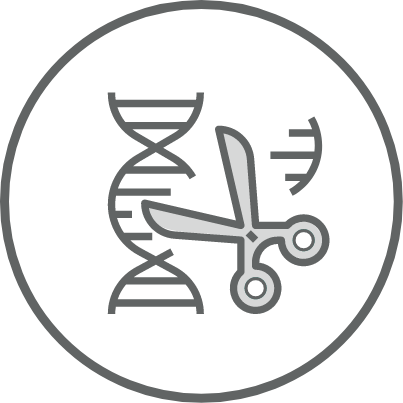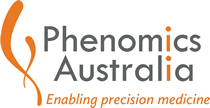
In vivo Genome Engineering & Disease Modelling
Phenomics Australia provides a national capability to explore the human genome and the genetic basis of health and disease. One way we achieve this is through the production of bespoke in vivo models possessing targeted mutations of interest and which can replicate clinical findings. These in vivo models serve as a crucial tool to study rare disease and enable new clinical understanding and treatments.
Expertise

-

CRISPR/Cas9 technology
-

Gene targeting strategies
-

Gene targeting in mouse embryonic stem cells
-
COVID-19 modelling
-

Production of transgenic mice, rats, and other species
-

DNA construct design and production
-

Animal model provision
-

Transgenic Drosophila production
Explainer
Genome engineering, or genome editing, or gene editing, is a type of genetic modification in which DNA is inserted, deleted, modified, or replaced. In vivo genome engineering and disease modelling is the production of an organism possessing such DNA for the purposes of health research, an important underpinning capability for what is widely known as Precision Medicine. All in vivo genome engineering and disease modelling projects are subject to ethical approval by the relevant local committee.
Unlike early genetic engineering techniques that randomly insert genetic material into a host genome, genome editing targets the insertions to site-specific locations. Genome engineering using CRISPR technology continues to revolutionise biomedical science. CRISPR is an acronym for Clustered Regularly Interspaced Short Palindromic Repeat. This name refers to the unique organization of short, partially palindromic repeated DNA sequences found in the genomes of bacteria and other microorganisms. The CRISPR/Cas9 genetic scissors tool has received the 2020 Chemistry Nobel Prize.
Services

Our genome editing technology is being used for the production of new disease models as well as a whole-genome screening in vivo. Using CRISPR , we are able to produce mouse models possessing constitutive gene knockouts (KO), null mutations, defined point mutations, epitope and reporter tags, conditional mutations, single-base substitutions, and gene knock-ins. We are also able to make null mutations in rats and other species. Genome editing in zygotes offers many advantages over traditional methods including much faster generation of KO animals (within 3-6 weeks of injection), lower cost, and complete control over the genetic background. Successful generation of mice will be validated by NGS or LRPCR.
This includes sgRNA design, generating vectors for homologous recombination, and genotyping targeted mice with next-generation sequencing.
We are also able to target genetic modifications in mice using classical gene engineering strategies in embryonic stem cells. This involves the production of chimaeras for obtaining germline transmission of the genetic modification.
Through a $1m Australian Commonwealth Government grant for rapid resourcing of our genome engineering and model import services, we offer subsidised access to specific mouse strains for COVID-related research, either produced domestically or sourced internationally.
The models currently/soon to be available are:
Gt(ROSA)26Sortm1(mAce2-hAce2)WEHI – Human ace2 cDNA expressed under the regulation of the mouse ace2 promoter, this is a knock-in into the Rosa26 safe harbour locus.
Gt(ROSA)26Sortm2.1(hFoxj1-hAce2)WEHI – Human ace2 cDNA expressed under the regulation of the human foxj1 promoter (in reverse orientation), this is a knock-in into the Rosa26 safe harbour locus.
C56BL/6J-Tg(mAce2-hAce2)MGMP – Human ace2 cDNA expressed under the regulation of the mouse ace2 promoter, this is transgenic animal model. The integration of the Human ace2 cDNA is random. We have several animals available with a different copy number count (low copy number, medium copy number and high copy number)
We can make transgenic mice, rats, and other species by injecting fertilized eggs with DNA for random integration into the genome. Applications include BAC transgenesis for faithful gene expression and smaller plasmid constructs for various purposes.
We can design and make your construct for CRISPR mutagenesis, gene targeting in ES cells, or transgenic animal production. With our BAC recombineering expertise, there is no limit to the type and range of constructs we can make — quickly and cost-effectively.
Animal model provision of generated germline mice to your specified animal facility. The mouse production at Phenomics Australia genome engineering nodes is performed within an extremely clean animal facility, ready to distribute the mice within Australia without any quarantine requirements of the receiving institution.
The Australian Drosophila Transgenic Facility, is a unique facility for generating transgenic strains of the fruit fly Drosophila melanogaster. It utilises the revolutionary new CRISPR/Cas9 genome editing technologies married with well-established transgenesis methods.
Strains background:
- C57BL/6
- C57BL/6JMarp (B6J)
- C57BL/6J, JAX stock no. 000664
- C57BL/6N (B6N)
- Other strains can be used on request
Further Information
Phenomics Australia provides a national centre of expertise and service provision to deploy CRISPR for increased speed, efficiency, and decreased cost for the production of animal strains carrying targeted mutations while maintaining the expertise for traditional transgenic technologies. To meet the high demand for this platform, Phenomics Australia offers genome editing services through five nodes across Australia, operating at Monash, ANU, ONJCRI, SAHMRI and PeterMac.
With an established track record and reputation for excellence, our Genome Engineering team uses techniques such as CRISPR-mediated mutagenesis, classical gene targeting, and transgenesis to create optimal tools for your research delivering a comprehensive service in genome modification. Phenomics Australia continues to develop and expand mutagenesis capabilities through in-house research and development, information exchange between service nodes, other CRISPR practitioners, and thorough literature review, thereby establishing a national community of practice for genome engineering technologies and applications. With our collective experience and expertise in a wide variety of projects, Phenomics Australia can assist in the production of genetically modified animal models using mice, rats, rabbits, and flies. By providing a leading capability to make genetic associations with disease, Phenomics Australia makes the cost of investigating pathways associated with disease affordable.

